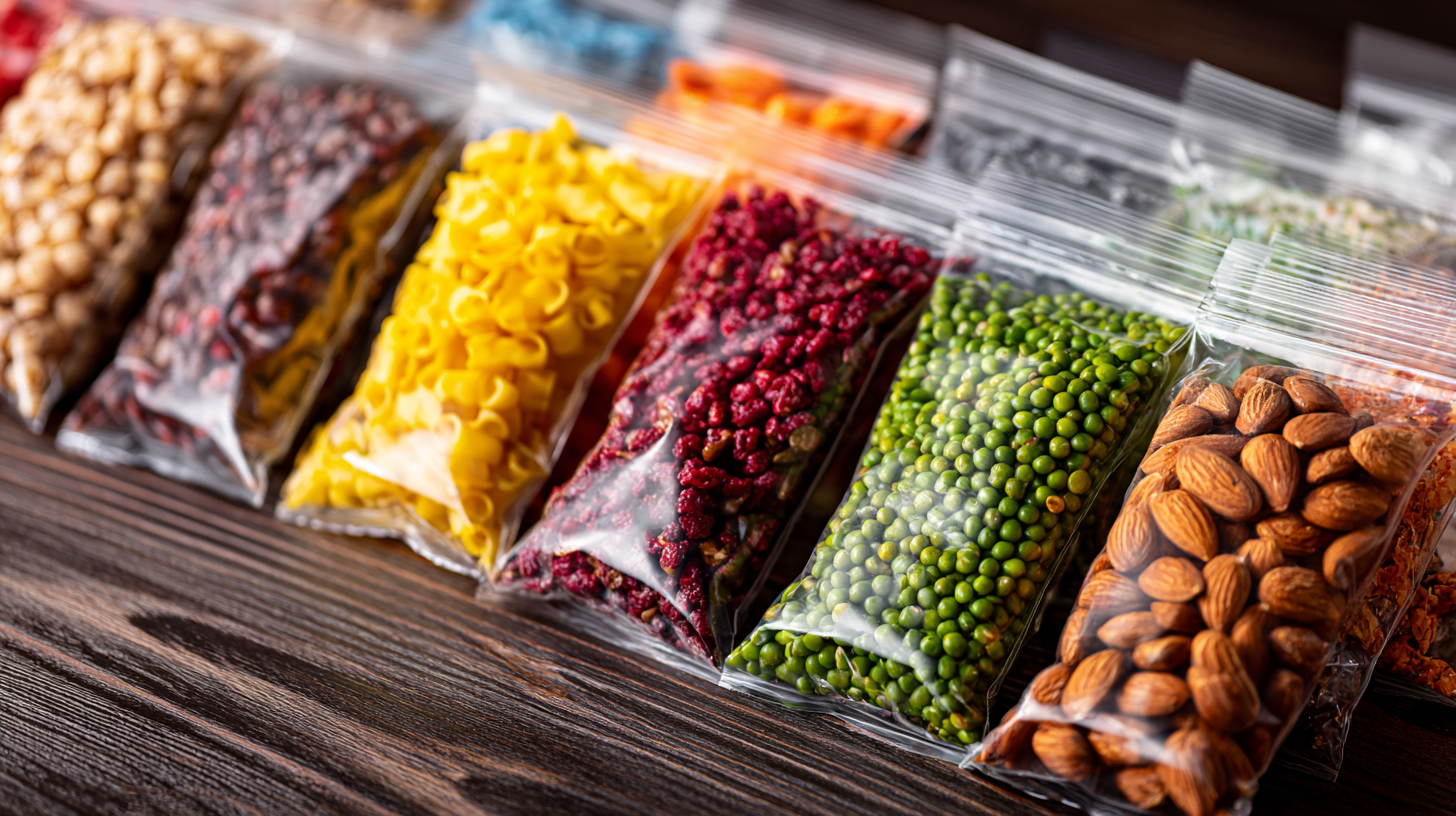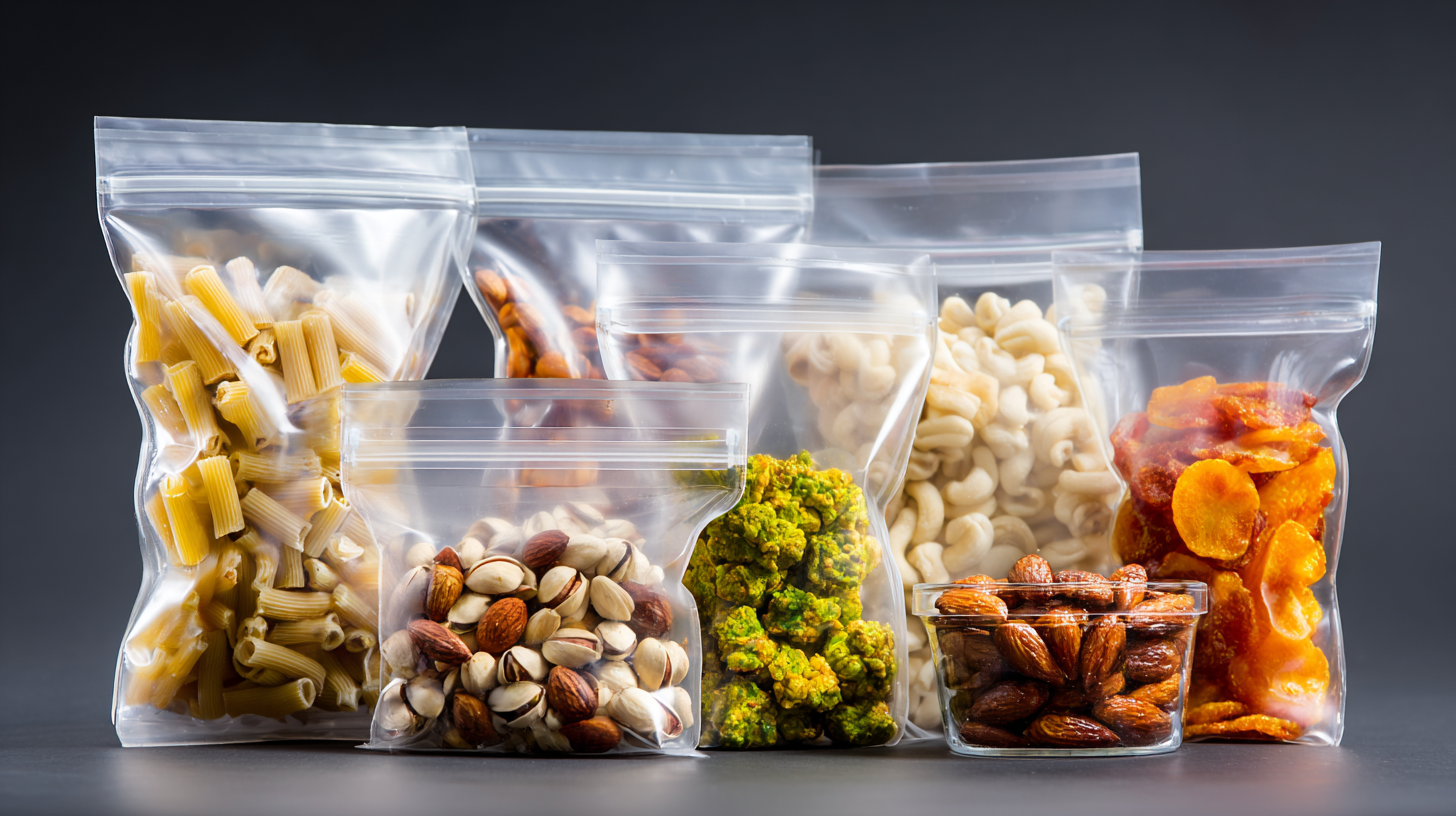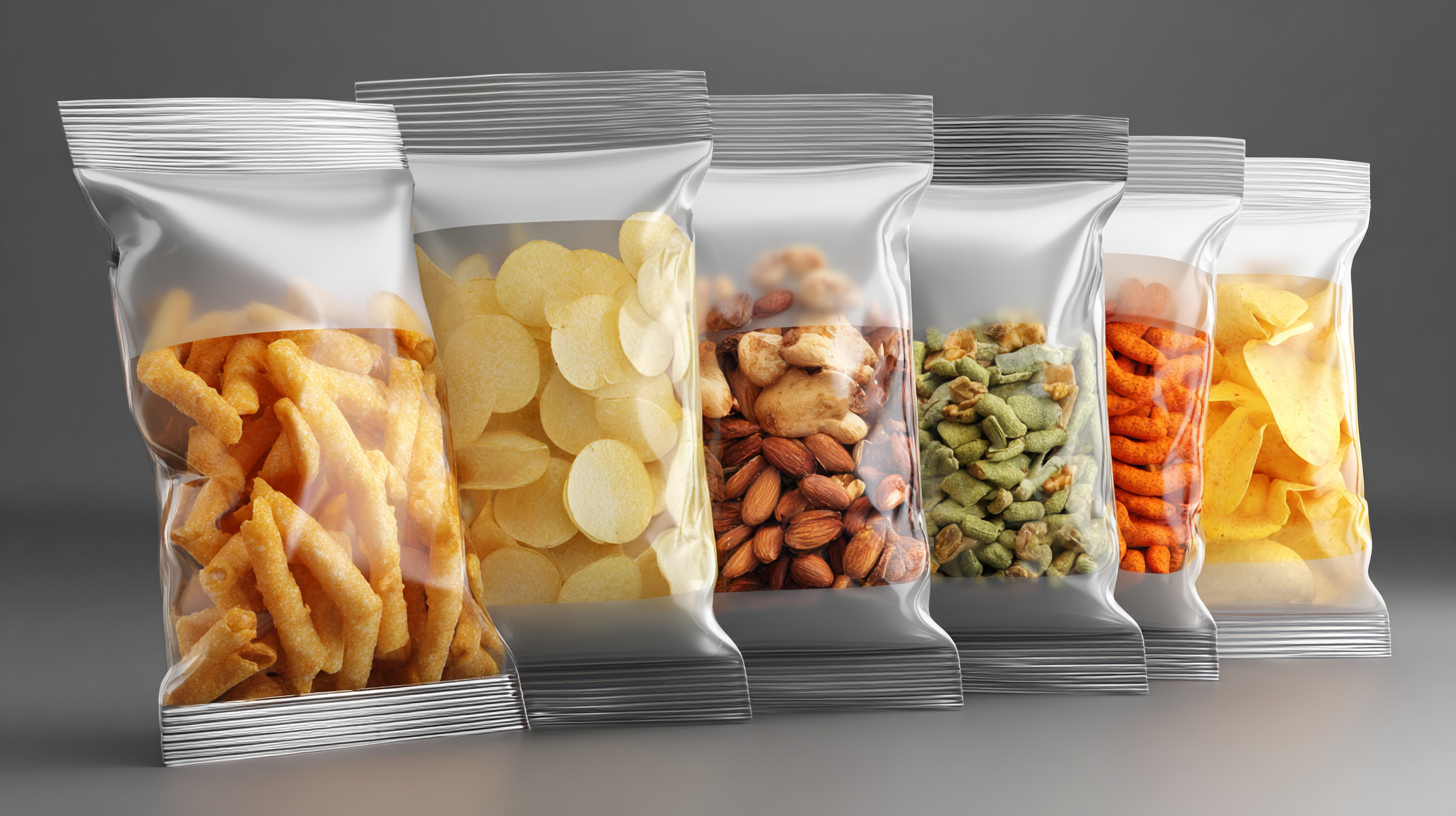ProMach is your partner from start to finish. Our product brands are grouped into distinct business lines that make the most sense to our customers, covering every function of the production line: Filling, Bottling & Capping, Decorative Labeling, Flexibles & Trays, Pharma, Handling & Sterilizing, Labeling & Coding, Robotics & End of Line, and Systems & Integration.
learn more5 Key Reasons Flexible Packaging is Revolutionizing the Food Industry
In recent years, the food industry has experienced a significant transformation, largely driven by the emergence of Flexible Packaging. According to a report from Smithers Pira, the global flexible packaging market is projected to reach $300 billion by 2024, reflecting a compound annual growth rate of 4.9%. This surge in popularity can be attributed to several compelling advantages that Flexible Packaging offers over traditional packaging methods, such as sustainability, cost-effectiveness, and enhanced product freshness. Moreover, with consumer preferences shifting towards convenience and eco-friendliness, Flexible Packaging presents an innovative solution that addresses these demands while simultaneously reducing waste. As manufacturers and retailers embrace this trend, it becomes essential to explore the key reasons why Flexible Packaging is revolutionizing the food industry and how it is shaping the future of food distribution and consumption.

Benefits of Flexible Packaging in Reducing Food Waste
In recent years, flexible packaging has emerged as a transformative solution in the food industry, particularly in its ability to combat food waste. Traditional packaging often leads to spoiling due to poor sealing or premature exposure to air, resulting in significant losses. However, flexible packaging is designed to provide a more airtight seal and is often made from materials that prolong shelf life, thus enabling consumers to enjoy products for longer periods without compromising freshness.
One of the standout benefits of flexible packaging is its lightweight nature, which not only reduces transportation costs but also minimizes the carbon footprint associated with moving goods. This is crucial in today's eco-conscious climate, where reducing waste is a top priority. Additionally, flexible packaging solutions often feature resealable options that allow consumers to use only what they need, further decreasing the likelihood of excess food waste in households. By reinventing the way food is packaged, flexible solutions are not just enhancing convenience but also playing a vital role in promoting sustainability and resource efficiency in the food supply chain.
5 Key Reasons Flexible Packaging is Revolutionizing the Food Industry - Benefits of Flexible Packaging in Reducing Food Waste
| Reason | Description | Impact on Food Waste (%) |
|---|---|---|
| Extended Shelf Life | Flexible packaging helps preserve food longer by reducing exposure to oxygen and moisture. | 30% |
| Lightweight Design | Less material is used for packaging, which lowers transportation costs and carbon emissions. | 15% |
| Portion Control | Flexible packaging allows for single-serve options, minimizing food waste by providing just the right amount. | 20% |
| Recyclability | Many flexible packaging materials are recyclable, promoting environmentally friendly disposal. | 10% |
| Barrier Properties | Flexible packaging provides excellent barrier properties, protecting products from contaminants and spoilage. | 25% |
Convenience and Portability: The Modern Consumer’s Demand
In today’s fast-paced world, convenience and portability are paramount for modern consumers, especially in the food industry. Flexible packaging meets these demands in ways traditional packaging often cannot. With lightweight and space-saving designs, flexible packages are easy to carry, making meals and snacks accessible for those on-the-go. From resealable bags to pouches that fit into lunch boxes seamlessly, flexible packaging has transformed the way consumers approach their eating habits.
Moreover, the functionality of flexible packaging enhances the overall consumer experience. Many products now come equipped with features that allow for easy pouring, opening, and resealing, catering to the needs of busy lifestyles. This convenience is not just about ease of use; it also extends shelf-life, helping consumers enjoy fresh products longer without the fear of spoilage. As the demand for on-the-go food solutions grows, the food industry continues to embrace flexible packaging, revolutionizing how we perceive and consume food in our daily lives.
Barrier Properties: How Flexible Packaging Preserves Freshness
Flexible packaging is transforming the food industry, primarily due to its superior barrier properties that significantly enhance the preservation of freshness. Research from the Flexible Packaging Association indicates that flexible packaging can reduce food spoilage by up to 50%, making it an essential choice for both consumers and manufacturers. The innovative materials used in flexible packaging, such as multi-layer films, provide excellent barriers against moisture, oxygen, and light—elements that often compromise food integrity.
Moreover, a report from Smithers Pira reveals that the flexible packaging market is expected to reach $300 billion by 2025, driven by the demand for materials that ensure prolonged shelf life and reduced food waste. In addition to freshness retention, these packaging solutions also offer consumer convenience with features like resealability and portion control. With approximately 30-40% of food in the U.S. going to waste, the role of flexible packaging in extending shelf life and maintaining quality is more critical than ever. This not only benefits food manufacturers looking to minimize losses but also supports sustainable practices by reducing the environmental impact associated with food waste.
5 Key Reasons Flexible Packaging is Revolutionizing the Food Industry
Sustainability in Flexible Packaging: A Greener Future for Food
The food industry's shift towards flexible packaging is fundamentally reshaping sustainability practices. Innovations in materials, such as flexible paper packaging, are at the forefront of this transformation, driven by the urgent need for environmentally friendly solutions. This shift is not merely a trend; data indicates that the global market for sustainable packaging is poised for explosive growth, with projections for a significant revenue surge from 2025 to 2034. It reflects a wider move towards sustainable practices across the supply chain, where every stage contributes to reducing environmental impact.
Tip: When considering sustainable packaging options, explore materials that are biodegradable, compostable, and made from renewable resources. Alternatives like corn starch, mushroom roots, and seaweed are gaining traction as effective replacements for traditional plastic packaging.

Additionally, consumer behavior plays a crucial role in driving the demand for sustainable packaging solutions. With 40% of plastics sourced from the packaging sector in Europe alone, the push is on for brands to adopt eco-friendly alternatives. As environmental awareness grows, companies that prioritize sustainability are better aligned with consumers’ values, leading to enhanced brand loyalty and market competitiveness.
Tip: Engaging with consumers through transparency about sustainable practices can significantly enhance brand reputation and foster a loyal customer base.
Cost-Effectiveness of Flexible Packaging Solutions for Producers
Flexible packaging is rapidly gaining traction in the food industry, and one of the primary drivers behind this trend is its cost-effectiveness. Producers are increasingly turning to flexible packaging solutions as they offer significant savings in materials and transportation. Unlike traditional rigid packaging, flexible options often require less material to produce, which reduces raw material costs and minimizes waste. This makes it not only a financially savvy choice but also an environmentally friendly one, aligning with the growing demand for sustainable practices in manufacturing.

Additionally, flexible packaging can be more cost-efficient in terms of logistics. Its lightweight nature allows for lower shipping costs, as more products can be transported in a single load. This efficiency in transportation translates to reduced fuel consumption, further lowering expenses for producers. Moreover, the versatility of flexible packaging means it can be tailored to various products, ensuring that companies can optimize their packaging strategies without incurring heavy upfront costs. As the food industry continues to evolve, the economic advantages of flexible packaging are becoming increasingly hard to ignore for producers seeking to enhance their bottom line.